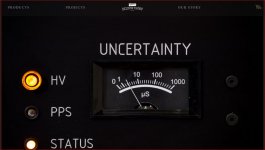JHOLLAND1
Titanium
- Joined
- Oct 8, 2005
- Location
- western washington state
Dalibor Farny is premier builder/restorer of Nixie apparatus
he recently completed bespoke build of measuring instrument for NASA
NASA specd Nixie display--like one used 50 years prior
Farny instrument incorporates analog meter i have not previously encountered--displaying uncertainty
Calibration display for NASA
he recently completed bespoke build of measuring instrument for NASA
NASA specd Nixie display--like one used 50 years prior
Farny instrument incorporates analog meter i have not previously encountered--displaying uncertainty
Calibration display for NASA



